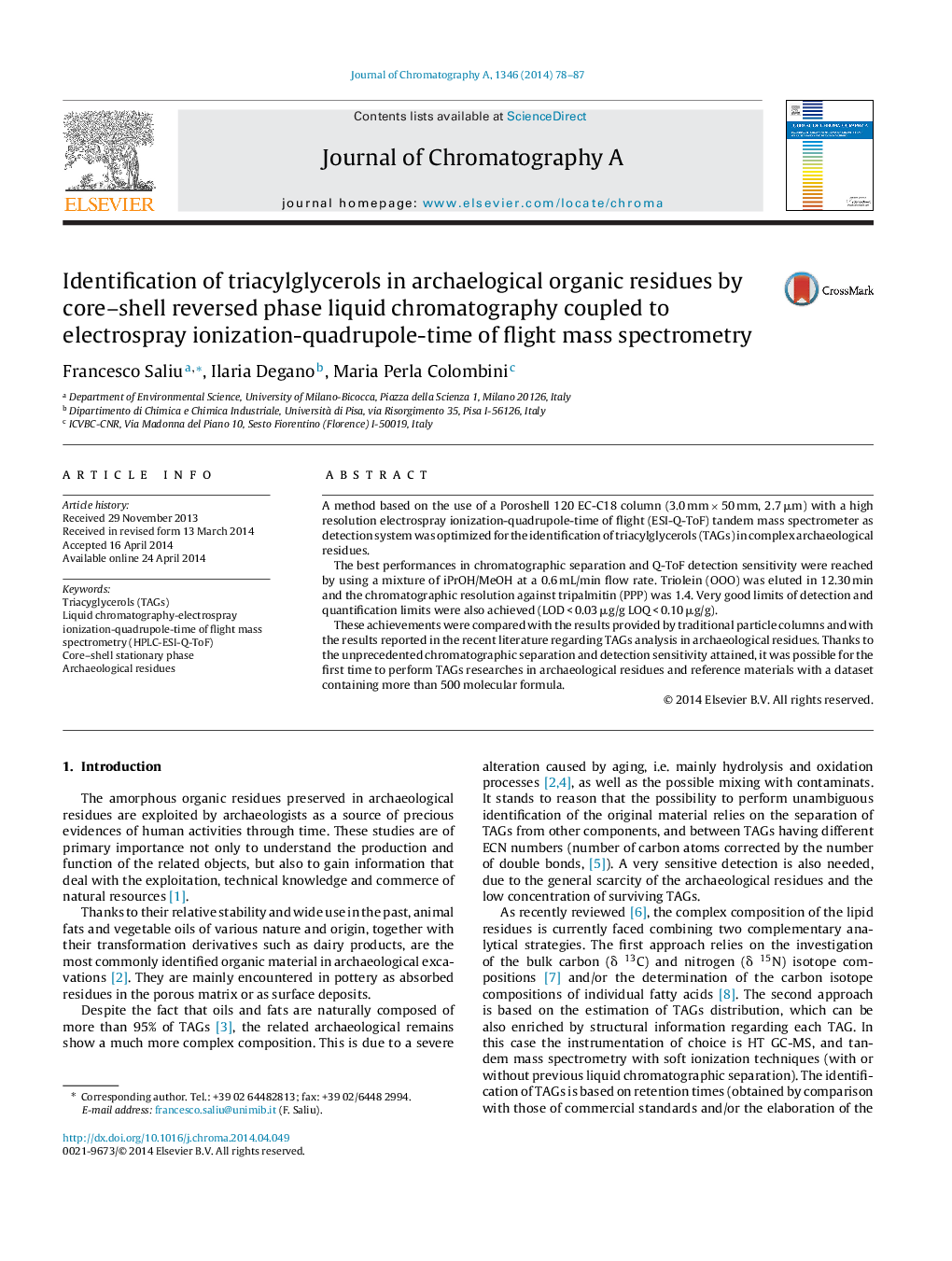| Article ID | Journal | Published Year | Pages | File Type |
|---|---|---|---|---|
| 1199902 | Journal of Chromatography A | 2014 | 10 Pages |
•HPLC-ESI-MS-QToF was used for TAGs identification in archaeological residues.•Core–shell stationary phase provide unprecedented chromatographic performance.•Good TAG separation enabled the use of very large database of TAG molecular formula.•Natural sources of real archaeological lipid residue were determined very precisely.
A method based on the use of a Poroshell 120 EC-C18 column (3.0 mm × 50 mm, 2.7 μm) with a high resolution electrospray ionization-quadrupole-time of flight (ESI-Q-ToF) tandem mass spectrometer as detection system was optimized for the identification of triacylglycerols (TAGs) in complex archaeological residues.The best performances in chromatographic separation and Q-ToF detection sensitivity were reached by using a mixture of iPrOH/MeOH at a 0.6 mL/min flow rate. Triolein (OOO) was eluted in 12.30 min and the chromatographic resolution against tripalmitin (PPP) was 1.4. Very good limits of detection and quantification limits were also achieved (LOD < 0.03 μg/g LOQ < 0.10 μg/g).These achievements were compared with the results provided by traditional particle columns and with the results reported in the recent literature regarding TAGs analysis in archaeological residues. Thanks to the unprecedented chromatographic separation and detection sensitivity attained, it was possible for the first time to perform TAGs researches in archaeological residues and reference materials with a dataset containing more than 500 molecular formula.
